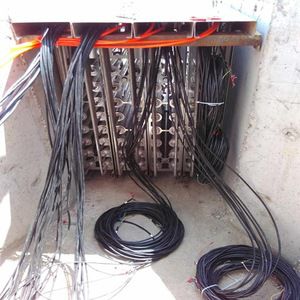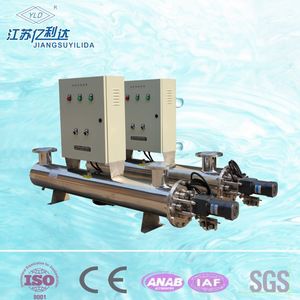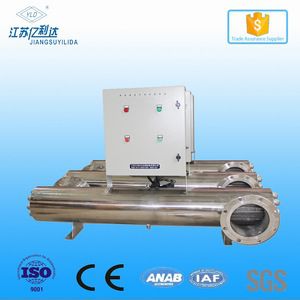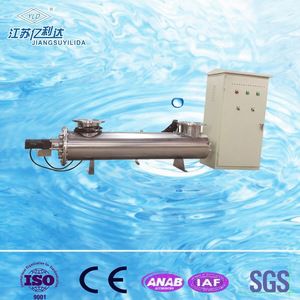UV Sterilizers
Ultraviolet water treatment systems (UV sterilizers) kill bacteria in water. They are often used to ensure safe drinking water from well, spring and borehole water supplies. Due to increased legislation are now regularly used in food and drink related industries.
Micro organisms including bacteria, viruses and cysts are all around us naturally. Many are harmless but exposure to "bad" ones can cause severe illness particularly in the elderly and very young. There is a wide variety of water treatment products available to improve taste, clarity, scale etc but none of these are designed to combat bacteria. Ultra violet water treatment is one of the safest ways to disinfect water as the UV rays are a natural component of sunlight. No chemicals are added so there is no danger from overdosing or creating a bad taste.
What does a UV sterilizer do?
A UV sterilizer is used to control infections by stopping the spread of microorganisms from one fish/coral/invertebrate to another through the water. It is also used in pond applications to control free-floating algae. When operated correctly, free-floating microorganisms will be killed by the UV light. Note that the organisms must be in the water that flows to the UV sterilizer. The UV light has no residual effect and will not kill organisms attached to fish (e.g., adult stage of inch) or rocks (e.g., algae).
How do UV sterilizers work?
The UV sterilizer utilizes a germicidal fluorescent lamp that produces light at a wavelength of approximately 254 anemometers (2537 Angstroms). The water with the bacteria/algae passes over the bulb (or around the bulb if a quartz sleeve is used) and is irradiated with this wavelength. As the light penetrates the bacteria/algae, it mutates the DNA (genetic material), preventing growth/multiplication of the organism.
Application
1.Food processing industry, including juices, milk, drinks, beer, practical oil and canned food.
2.Electronic industry.
3.Hospitals, various laboratory and high levels of pathogenic body water disinfection.
4.Households building, residential, office buildings, hotels, restaurants, water factories.
5.Purification and disinfection of shellfish, fish cleaning and disinfection
6.Military camp, field water supply system
7.Urban wastewater disinfection.
8.Swimming pool, other recreational water disinfection
9.Thermal power, nuclear power plant industrial, central air conditioning system cooling water.
10.Biological, chemical and pharmaceutical, cosmetics for the production of cooling water.
11.Sea water, fresh water breeding, aquaculture water
12.Agricultural water disinfection
UV specification
Limitation of Use
The UV water disinfection system NOT intended for the treatment of water that has an obvious contamination or intentional source, such as raw sewage, nor is the unit intended to convert wastewater to microbiologically safe drinking water.
Water Quality (in)
Water quality plays a major role in the transmission of germicidal UV rays. It is recommended that the water does not exceed following maximum concentration levels
Effectively treating water with higher concentration levels than listed above can be accomplished, but may require added measures to improve water quality to treatable levels. If, for any reason, it is believed the UV transmission is not satisfactory, contact the factory.
UV wavelength (nm)
DOSAGE is the product of intensity & time
dosage=intensity*time=micro watt/cm2*time=microwatt-seconds per square centimeter
(μW-s/cm2)
Note:1000μW-s/cm2=1mj/cm2(milli-joule/cm2)
Water Quality (in)
Water quality plays a major role in the transmission of germicidal UV rays. It is recommended that the water does not exceed following maximum concentration levels
Maximum Concentration Levels (Very Important)
Iron | ≤0.3ppm(0.3mg/L) |
Hardness | ≤7gpg(120mg/L) |
Turbidity | ≤1NTU |
Manganese | ≤0.05ppm(0.05mg/L) |
Tannins | ≤0.1ppm(0.3mg/L) |
UV Transmittance | ≥750‰ |
Effectively treating water with higher concentration levels than listed above can be accomplished, but may require added measures to improve water quality to treatable levels. If, for any reason, it is believed the UV transmission is not satisfactory, contact the factory.
UV wavelength (nm)
DOSAGE is the product of intensity & time dosage=intensity*time=micro watt/cm2*time=microwatt-seconds per square centimeter (μW-s/cm2) Note:1000μW-s/cm2=1mj/cm2(milli-joule/cm2) |
As a general guideline, the following are some typical UV transmission rates (UVT)
City water supplies | 850-980‰ |
De-ionized or Reverse Osmosis water | 950-980‰ |
Surface waters(lakes, rivers, etc) | 700-900‰ |
Ground water(wells) | 900-950‰ |
Other liquids | 10-990‰ |
Parameters sheet
| model | capacity | Power | inlet-outlet | reactor | panel | Anchor | G weight |
| m³/hour | watt | mm | L×W×H | cm | screw | Kg | |
| YLCn-005 | 0.3 | 16 | 1/2″ | 30×6×11 | without | without | 5 |
| YLCn-008 | 1 | 25 | 1/2″ | 47×6.3×11 | without | without | 10 |
| YLCn-050 | 2 | 40 | 1″ | 100×9×20 | Φ8.9×25 (d×L) | 69×4×Φ1 | 25 |
| YLCn-150 | 6 | 80 | 1+1/4″ | 100×11×23 | 69×4×Φ1 | 30 | |
| YLCn-200 | 8 | 120 | 1+1/2″ | 100×15.9×30 | Φ8.9×45 (d×L) | 69×7×Φ1 | 35 |
| YLCn-300 | 12 | 160 | 2″ | 100×15.9×32 | 69×7×Φ1 | 40 | |
| YLC-050 | 2 | 40 | DN25/1″ | 100×8.9×30 | 25×30×12 (W×H×D) | 60×4×Φ1 | 45 |
| YLC-150 | 6 | 80 | DN32/11/4″ | 100×10.8×30 | 60×4×Φ1 | 50 | |
| YLC-200 | 8 | 120 | DN40/11/2″ | 100×15.9×40 | 60×7×Φ1 | 60 | |
| YLC-300 | 12 | 160 | DN50/2″ | 100×15.9×40 | 60×7×Φ1 | 70 | |
| YLC-360 | 15 | 200 | DN65/21/2″ | 100×15.9×40 | 60×7×Φ1 | 120 | |
| YLC-500 | 20 | 240 | DN65/21/2″ | 100×21.9×50 | 60×11×Φ1.2 | 130 | |
| YLC-600 | 25 | 280 | DN80/3″ | 100×21.9×50 | 60×11×Φ1.2 | 140 | |
| YLC-700 | 30 | 320 | DN100/4″ | 100×21.9×50 | 60×11×Φ1.2 | 150 | |
| YLC-1000 | 40 | 360 | DN100/4″ | 100×21.9×50 | 60×11×Φ1.2 | 160 | |
| YLC-1200 | 50 | 400 | DN125/5″ | 100×21.9×50 | 60×11×Φ1.2 | 180 | |
| YLC-1500 | 60 | 420 | DN150/6″ | 170×27.3×57 | 120×16×Φ1.4 | 210 | |
| YLC-2000 | 80 | 560 | DN150/6″ | 170×27.3×57 | 120×16×Φ1.4 | 220 | |
| YLC-2500 | 100 | 700 | DN150/6″ | 170×27.3×57 | 60×128×30 (W×H×D) | 120×16×Φ1.4 | 275 |
| YLC-3000 | 125 | 840 | DN150/6″ | 170×27.3×57 | 120×16×Φ1.4 | 300 | |
| YLC-4000 | 150 | 1120 | DN200/8″ | 173×32.5×65 | 120×20×Φ1.6 | 325 | |
| YLC-5000 | 200 | 1400 | DN200/8″ | 173×37.7×72 | 120×22×Φ1.6 | 350 | |
| YLC-7000 | 300 | 2100 | DN250/10″ | 175×42.6×80 | 120×24×Φ2.0 | 400 | |
| YLC-10K | 400 | 2520 | DN250/10″ | 176×52.9×95 | 60×150×40 (W×H×D) | 120×22×Φ2.2 | 475 |
| YLC-15K | 600 | 3080 | DN300/12″ | 176×78×110 | 120×32×Φ2.4 | 600 | |
| YLC-20K | 800 | 3920 | DN350/14″ | Designated | Designated | Designated | Designated |
| YLC-25K | 1000 | 4760 | DN350/14″ | Designated | Designated | Designated | Designated |
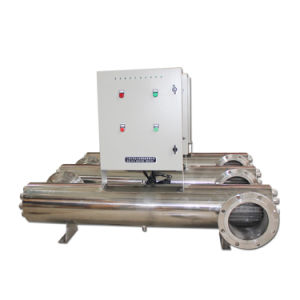
 China
China